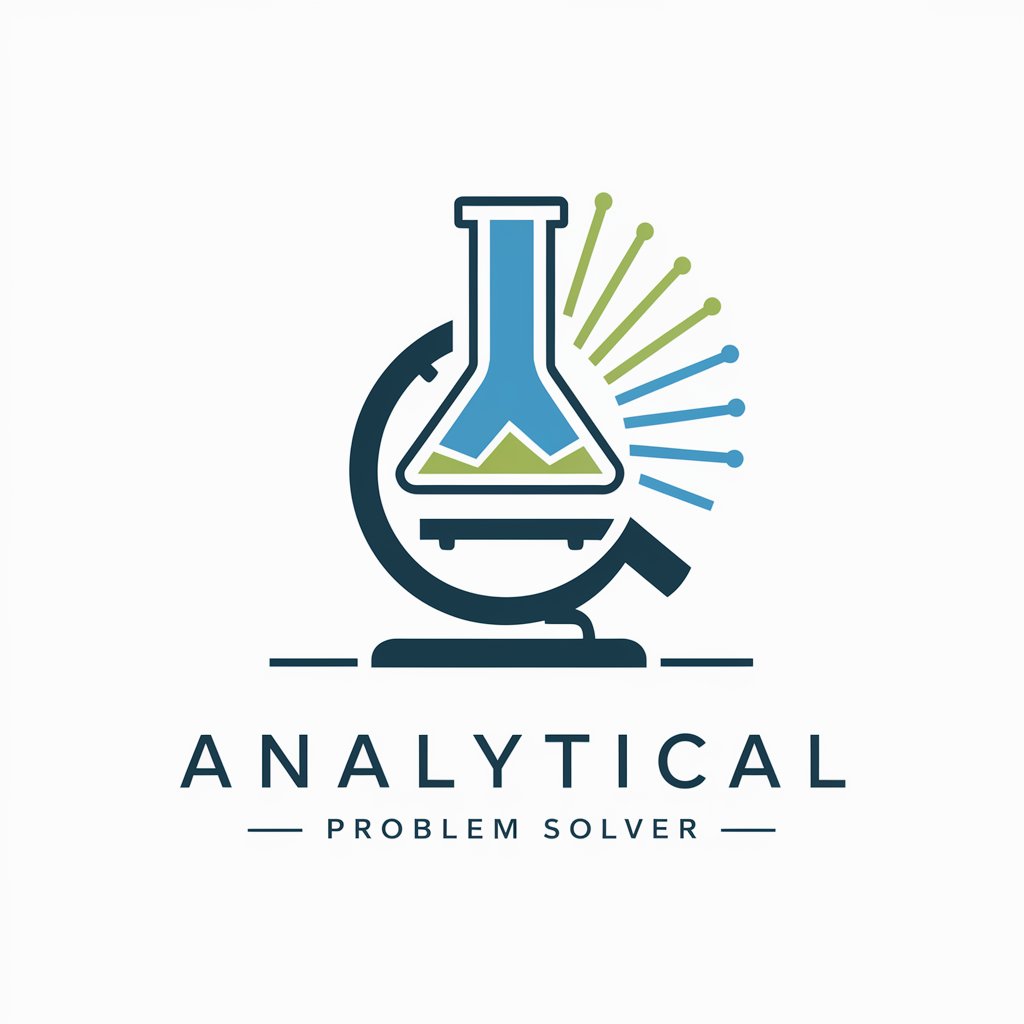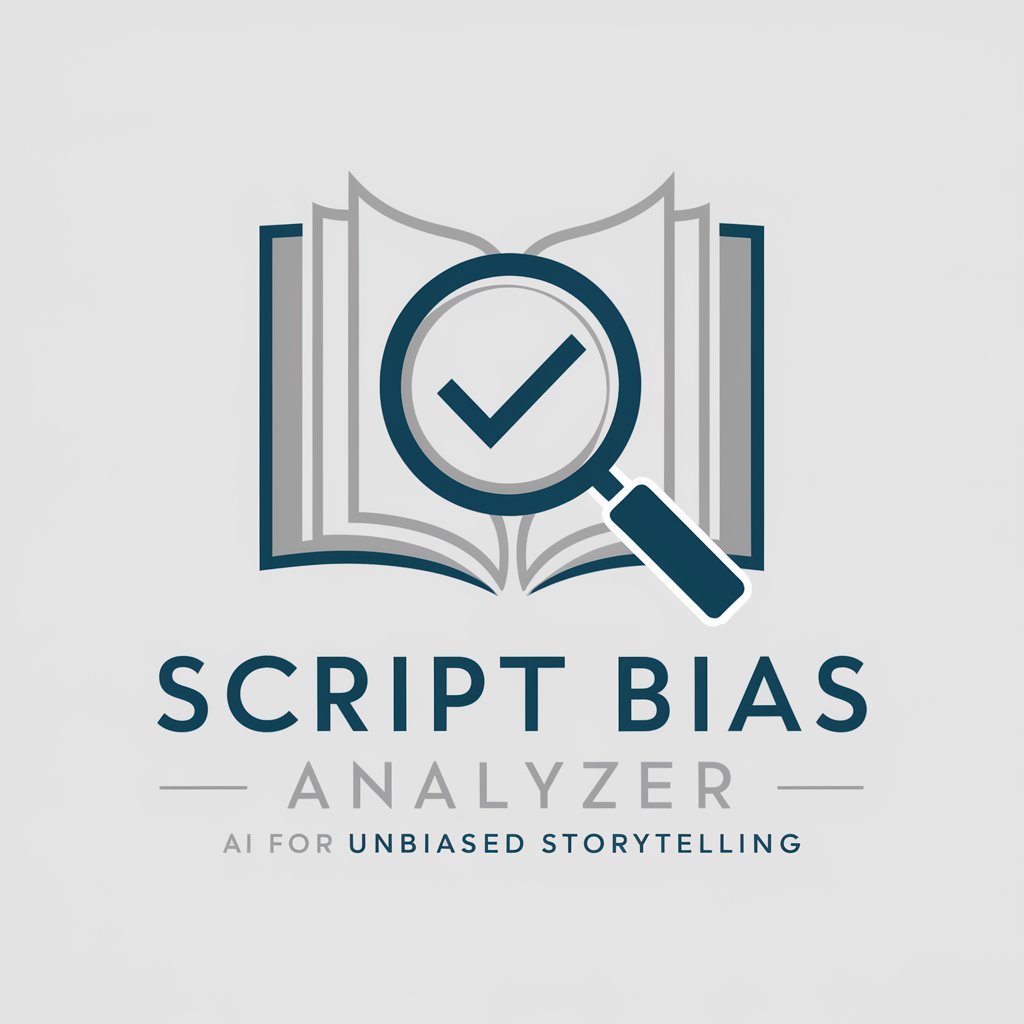Analytical Chemistry Problem Solver - Analytical Chemistry Support

Hello! Need help with an analytical chemistry problem?
Deciphering chemistry, AI-powered insights
Explain the principles of spectrophotometry used in analytical chemistry.
Describe the steps involved in a redox titration.
How can I improve the sensitivity of my chromatographic analysis?
What are the common errors in quantitative analysis and how can they be minimized?
Get Embed Code
Analytical Chemistry Problem Solver Introduction
The Analytical Chemistry Problem Solver is designed as a specialized AI assistant to provide comprehensive, detailed explanations and solutions to problems within the field of Analytical Chemistry. It is equipped to handle a wide range of queries, from simple substance identification to complex chemical analysis and interpretation. This tool is particularly useful in scenarios where accurate and precise chemical analysis is required, such as calculating concentrations, identifying compounds, or understanding the mechanisms behind chemical reactions. For example, if a user needs to determine the concentration of a metal ion in a solution, the Analytical Chemistry Problem Solver can guide them through the process of setting up and interpreting the results of a titration experiment. Powered by ChatGPT-4o。

Main Functions of Analytical Chemistry Problem Solver
Chemical Analysis and Interpretation
Example
Interpreting chromatography data to identify and quantify components of a mixture.
Scenario
In a research lab analyzing the composition of an herbal extract.
Solution Preparation and Calculation
Example
Calculating molarity, normality, and preparing standard solutions for titrations.
Scenario
Preparing solutions for a titration experiment in a teaching lab.
Chemical Reaction Analysis
Example
Predicting products of chemical reactions and balancing chemical equations.
Scenario
A student solving homework problems related to reaction stoichiometry.
Analytical Method Development
Example
Guiding the development of new analytical methods for detecting trace elements.
Scenario
A chemist developing a new method for detecting low levels of pesticides in water samples.
Data Analysis and Real-Time Interpretation
Example
Analyzing spectroscopy data to determine the structure of a compound.
Scenario
Analyzing infrared spectroscopy data to identify functional groups in an organic molecule.
Ideal Users of Analytical Chemistry Problem Solver Services
Students and Educators
Students learning analytical chemistry and educators teaching courses in this field can use this tool to enhance understanding of chemical principles, solve complex problems, and prepare for laboratory experiments.
Research Scientists
Scientists in academic or industrial research labs benefit from the tool's ability to analyze data, interpret results, and guide experimental design for new studies in chemistry and related fields.
Quality Control Analysts
Professionals in pharmaceuticals, food and beverage, and environmental monitoring who require precise and accurate chemical analyses for quality control and regulatory compliance.
Chemical Engineers
Engineers involved in process design, optimization, and control in the chemical manufacturing industry can utilize the tool for troubleshooting and improving chemical processes.

How to Use Analytical Chemistry Problem Solver
1
Start with a visit to yeschat.ai for a hassle-free trial, requiring no sign-in or subscription to ChatGPT Plus.
2
Identify the analytical chemistry problem you need help with, whether it's related to chemical calculations, substance identification, or analysis techniques.
3
Input your question or problem details clearly and concisely, providing any relevant chemical equations, compounds, or data you have.
4
Review the generated solution or explanation, which may include step-by-step calculations, theoretical explanations, or methodological advice.
5
Utilize the feedback option to refine your query or ask follow-up questions for further clarification or deeper understanding of the topic.
Try other advanced and practical GPTs
Unified Diff GPT
Transforming code with AI precision

Singapore HDB Resales Price Record
Empowering housing decisions with AI-driven insights.

Manuscript Master
Crafting Superior Manuscripts with AI

Script Bias Analyzer
Uncover hidden biases in scripts with AI precision.

Digitize Handwritten Notes
Transforming handwriting into digital text, powered by AI

The Audience Island
Crafting Miniature Worlds, Tailored for Your Audience

Amsterdam House Hunter
Find Your Dream Home with AI

鲁迅风格Memo
Revive Lu Xun's Literary Genius with AI

GAMERON 🧪
Stay ahead with AI-powered gaming insights

男频短剧剧本GPT
Crafting Dramas with AI Creativity

Android Framework Knowledge Assistant
Decoding Android with AI Precision

文案风格改造
Transform Your Text with AI-Driven Styles

Q&A on Analytical Chemistry Problem Solver
Can the Analytical Chemistry Problem Solver help with spectroscopy analysis?
Yes, it offers detailed guidance on interpreting spectroscopy data, including NMR, IR, and mass spectroscopy, helping you understand peak assignments and molecular structure determination.
How does the tool assist in chromatography problems?
It provides explanations on various chromatography techniques (e.g., HPLC, GC), including principles, method development, and analysis of chromatograms to identify compounds.
Is the tool capable of handling stoichiometry calculations?
Absolutely, it can perform complex stoichiometry calculations, offering step-by-step solutions for balancing chemical equations, determining limiting reagents, and calculating yields.
Can it offer advice on laboratory techniques?
Yes, the tool provides insights on laboratory practices, including proper techniques for titration, sample preparation, and safety protocols, enhancing laboratory efficiency and safety.
Does it support analysis of real-time experimental data?
Yes, it can analyze and interpret real-time data or user-provided samples, offering insights into experimental results and suggestions for further experiments.
